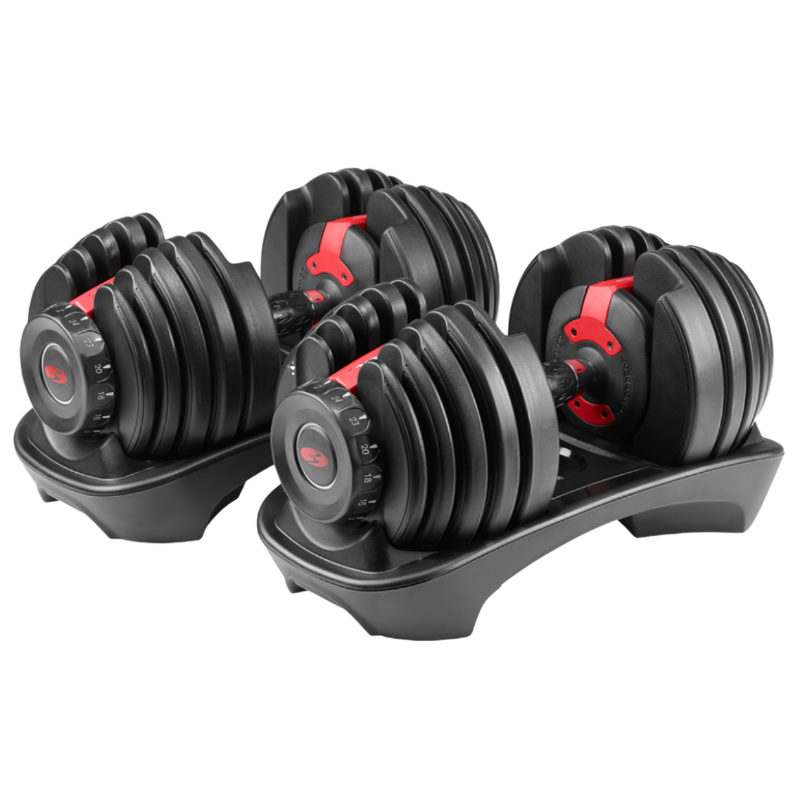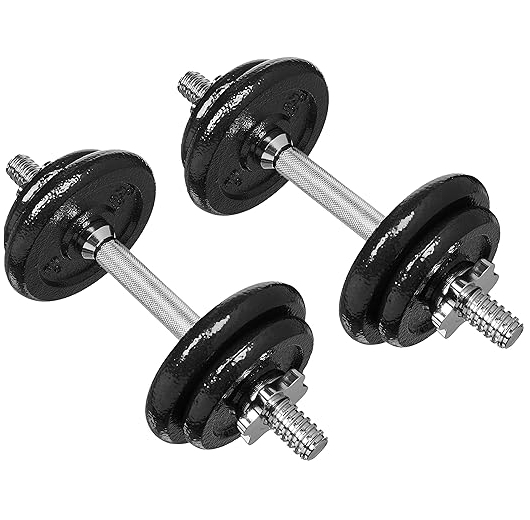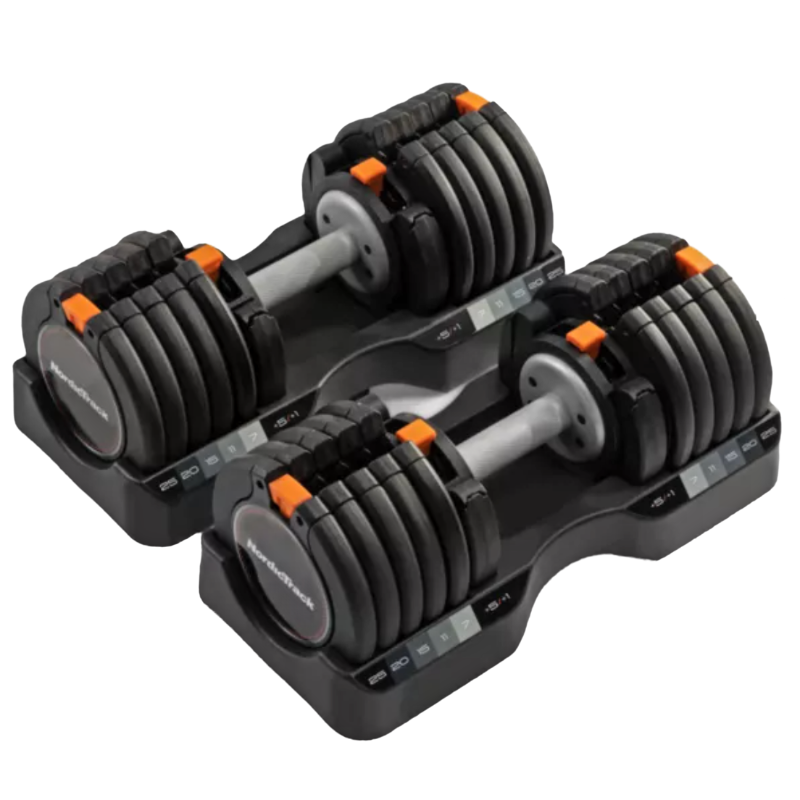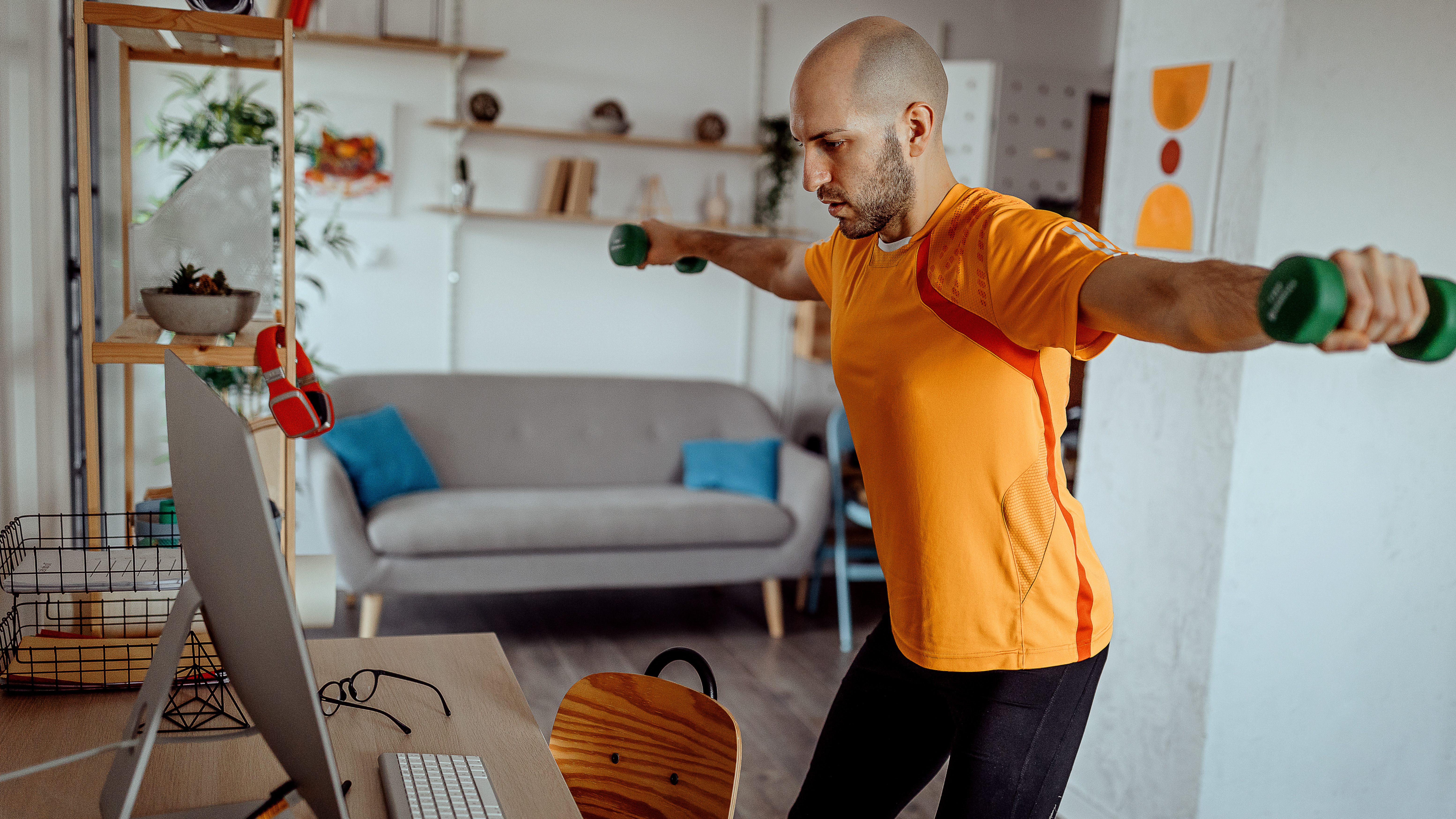
Exercising at home is great. It’s time-efficient, cost-efficient and you can choose the music. But with limited equipment at your disposal, it can be hard to know where to start.
To help, Trainer Academy’s certified strength coach Domenic Angelino has shared a six-move full-body workout you can do at home using just a pair of light-to-moderate weight dumbbells. There are three moves to target your legs, followed by another trio of exercises that target your upper body.
"This workout is designed to improve a mix of muscular strength, size and endurance," he explains. "Each portion of the workout—the lower body and upper body portions—involve one movement geared towards each of these three training goals."
This makes it an effective standalone session that can be performed up to three times per week, provided you leave at least a day between for rest.
How to do Domenic Angelino’s dumbbell workout
Dumbbell goblet squat: 3x6-8
Dumbbell lunge: 3x8-10 on each side
Dumbbell Romanian deadlift: 3x10-12
Dumbbell floor press: 3x6-8
Single-arm bent-over row: 3x8-10 on each side
Rear delt fly: 3x10-12
Perform the exercises listed above in straight sets. This means you will perform all sets of one exercise before moving on to the next exercise.
1. Dumbbell goblet squat
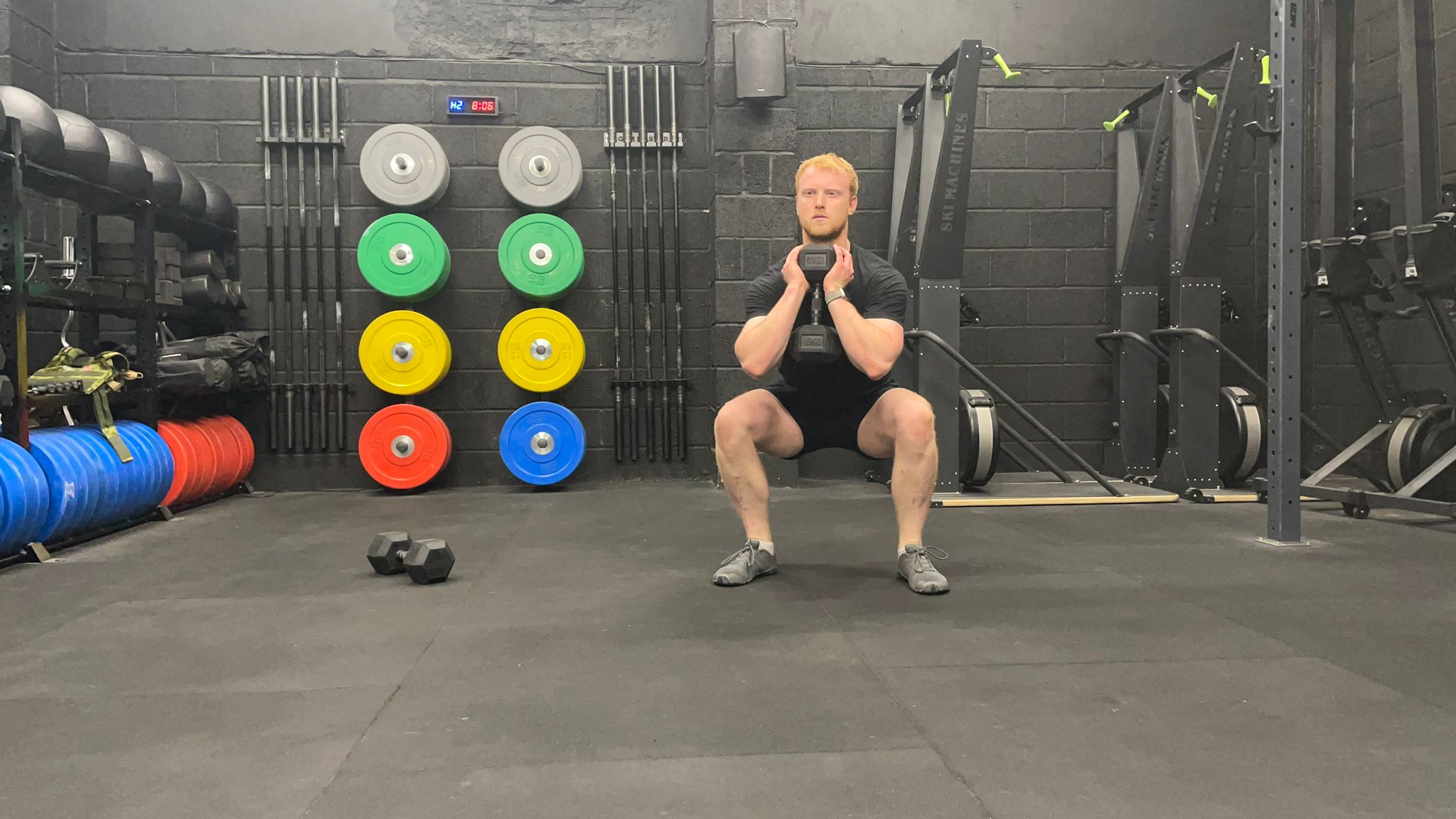
Sets: 3 Reps: 6-8 Rest: 90 seconds
- Stand upright with your feet roughly shoulder-width apart and your toes turned outward slightly.
- Hold a dumbbell upright, tight to your chest, with a hand on either side of the top head of the weight.
- Keeping your chest proud, push your hips back then lower them as far as you comfortably can towards the floor.
- Drive through your feet to return to the starting position.
2. Dumbbell lunge
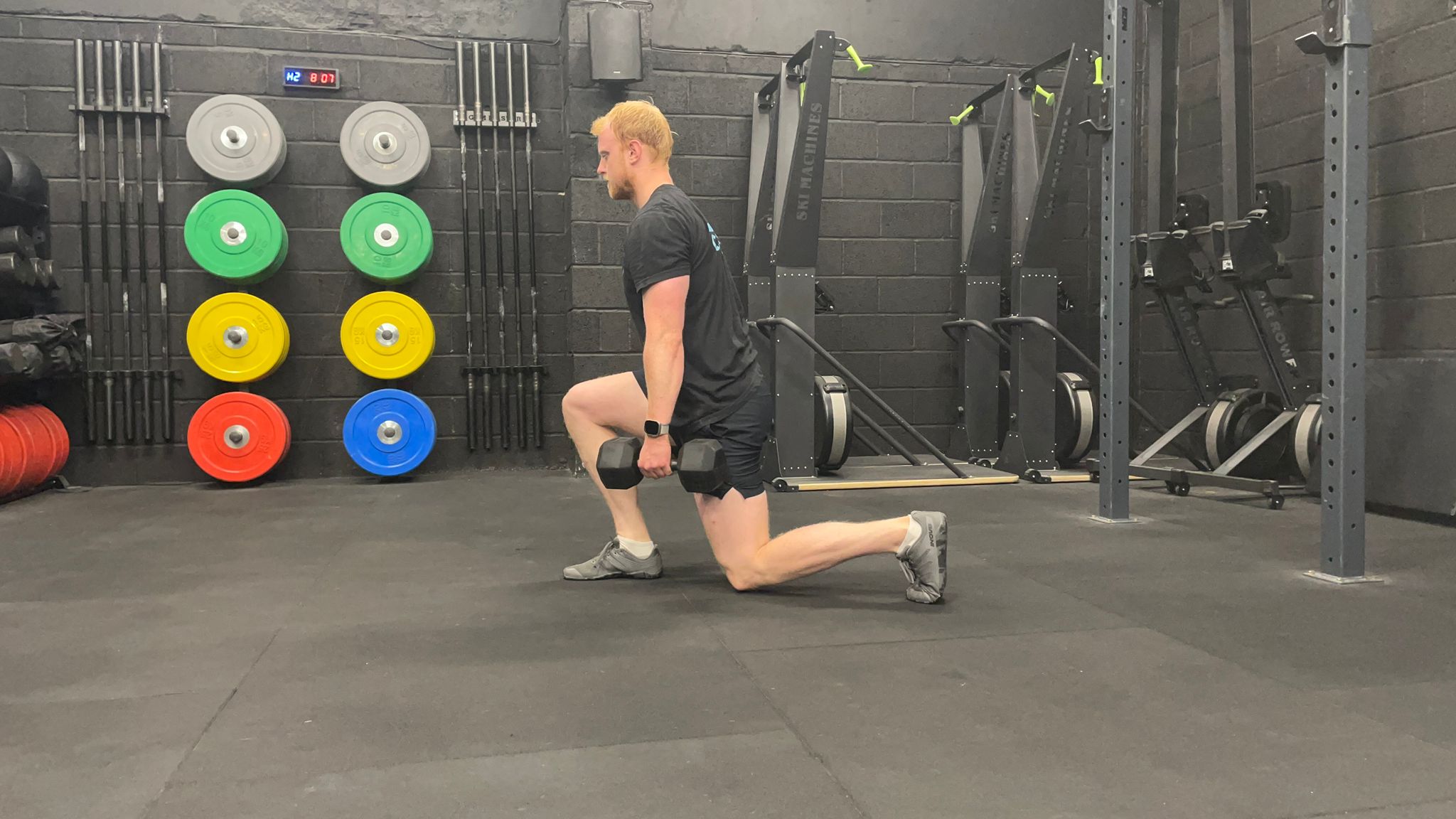
Sets: 3 Reps: 8-10 on each side Rest: 60 seconds
- Stand with your feet roughly hip-width apart holding a dumbbell in each hand. Your arms should be by your side and your palms facing inward.
- Keeping your torso upright, step forward with your right leg then lower your hips until both knees roughly form a right angle.
- Drive through your front foot to return to the starting position.
- Alternate the leg you step forward with after each repetition.
3. Dumbbell Romanian deadlift
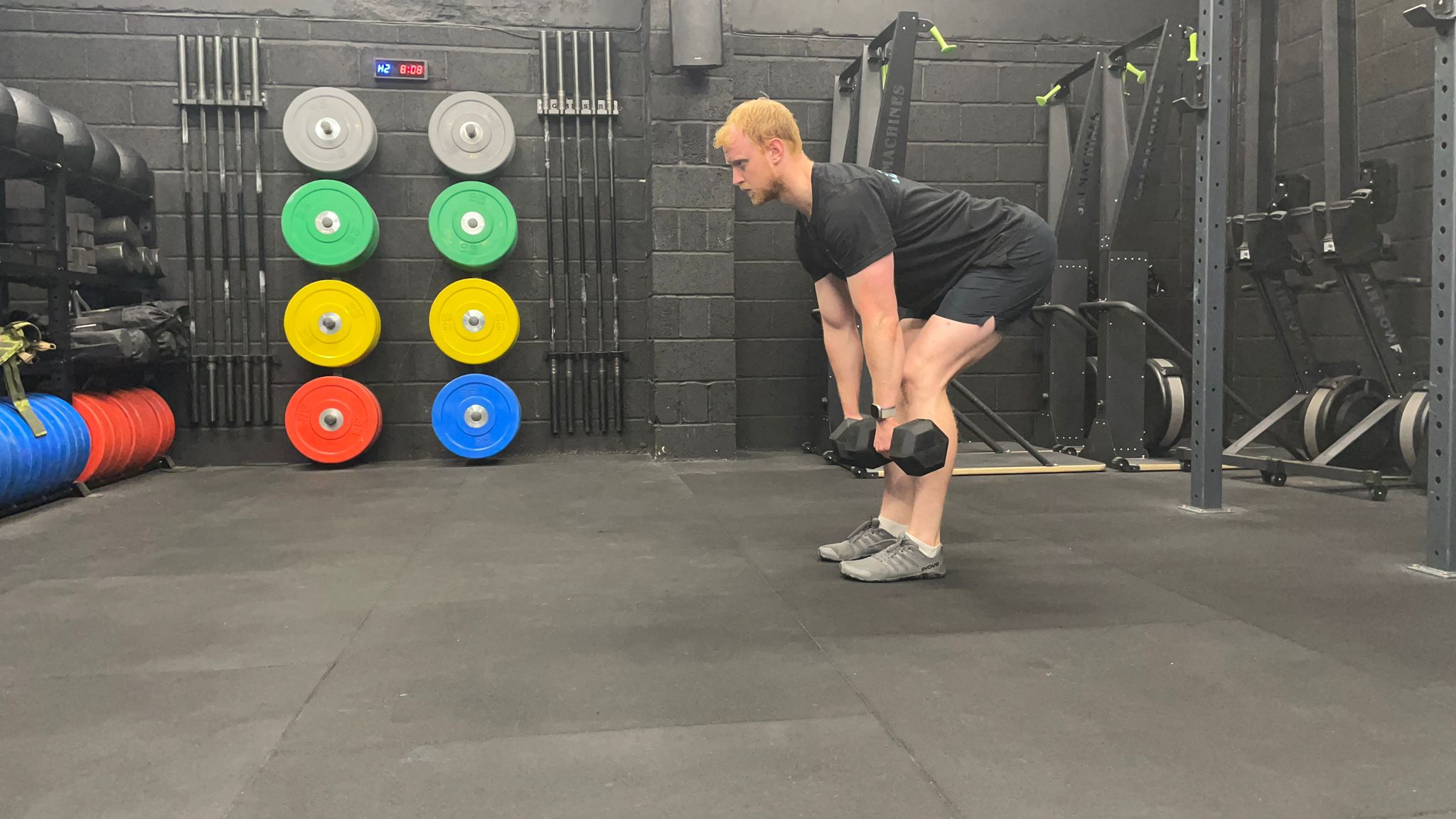
Sets: 3 Reps: 10-12 Rest: 45 seconds
- Stand upright with your feet approximately hip-width apart, holding a dumbbell in each hand. Your arms should hang towards the ground, and the dumbbells should be held in front of your pelvis with your palms facing you.
- Keeping your back flat, hinge at the hips to bend over, allowing the dumbbells to slide down the front of your legs until you feel your hamstrings tighten.
- Squeeze your buttocks as you reverse this movement to return to the starting position.
4. Dumbbell floor press
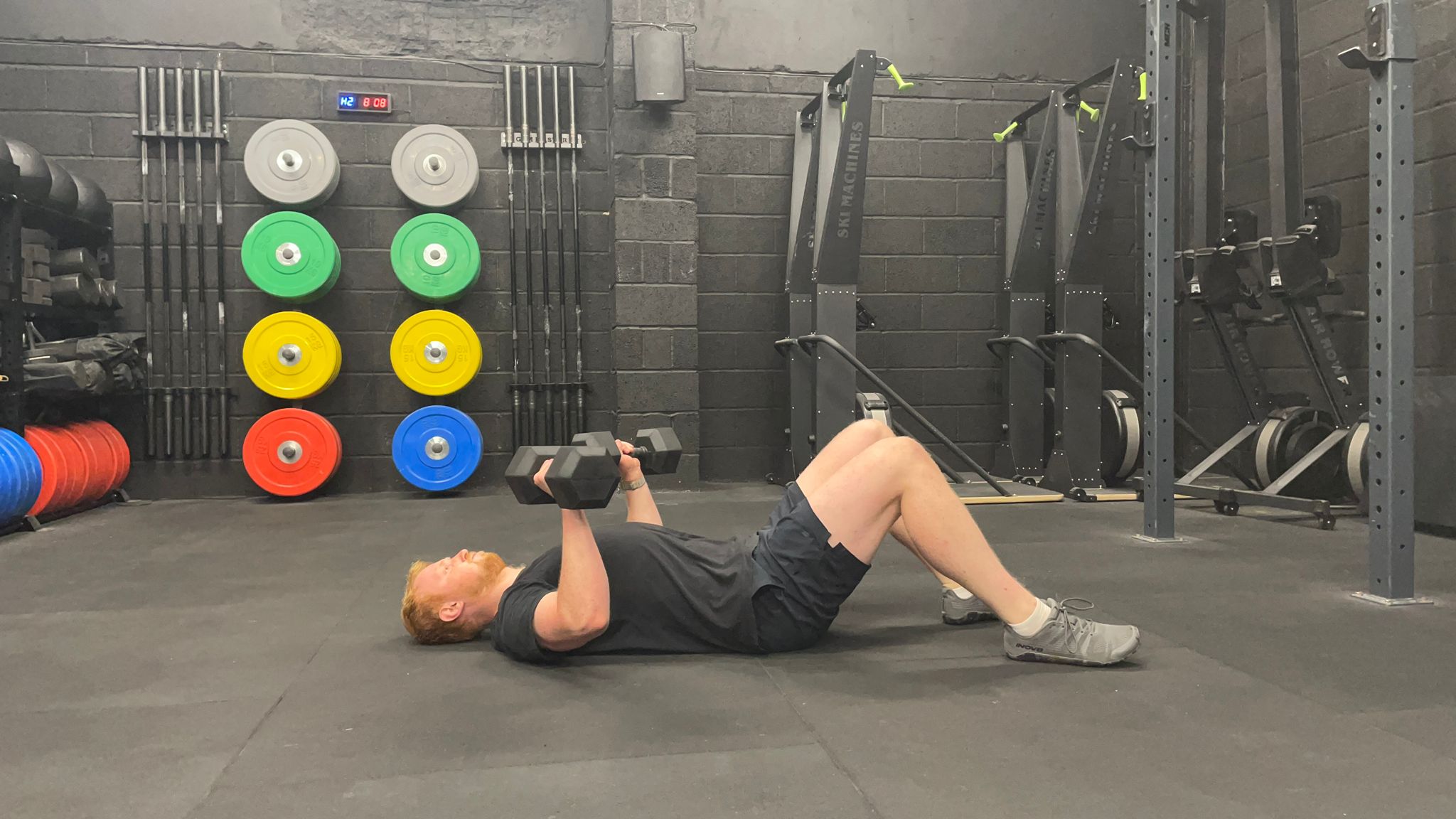
Sets: 3 Reps: 6-8 Rest: 90 seconds
- Lie on the floor with your knees bent and your feet planted on the ground, hip-width apart.
- Keeping your elbows fairly close to your sides, hold a dumbbell in each hand just above your chest. Your palms should form roughly a 45° angle with your torso, facing slightly inwards.
- Drive your knuckles upwards to fully extend your arms so your hands are directly above your shoulders, then control the weights back down to the starting position.
5. Single-arm bent-over row
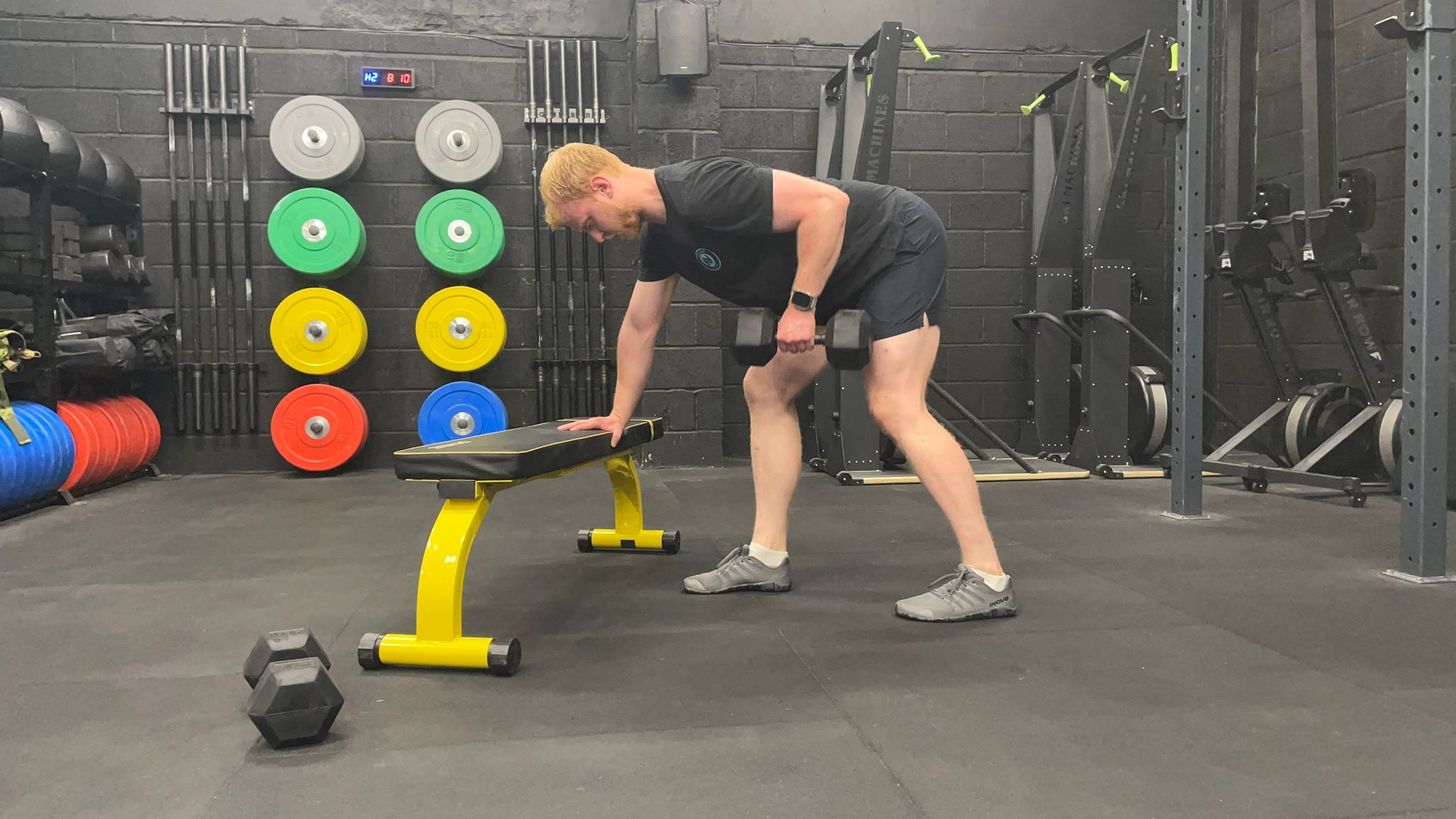
Sets: 3 Reps: 8-10 Rest: 60 seconds
- Assume a staggered stance with your left foot forward and your left hand resting on a sturdy knee-high surface like a weight bench or chair.
- Keeping a flat back, hinge at the hips to bend over until your torso is nearly parallel with the ground.
- Hold a dumbbell in your right hand, allowing your right arm to hang towards the ground.
- Drive your right elbow toward your hip to bring the dumbbell to the bottom right side of your rib cage. Squeeze your shoulder blades together at the top of the movement, then control the weight back down to the starting position.
6. Rear delt fly
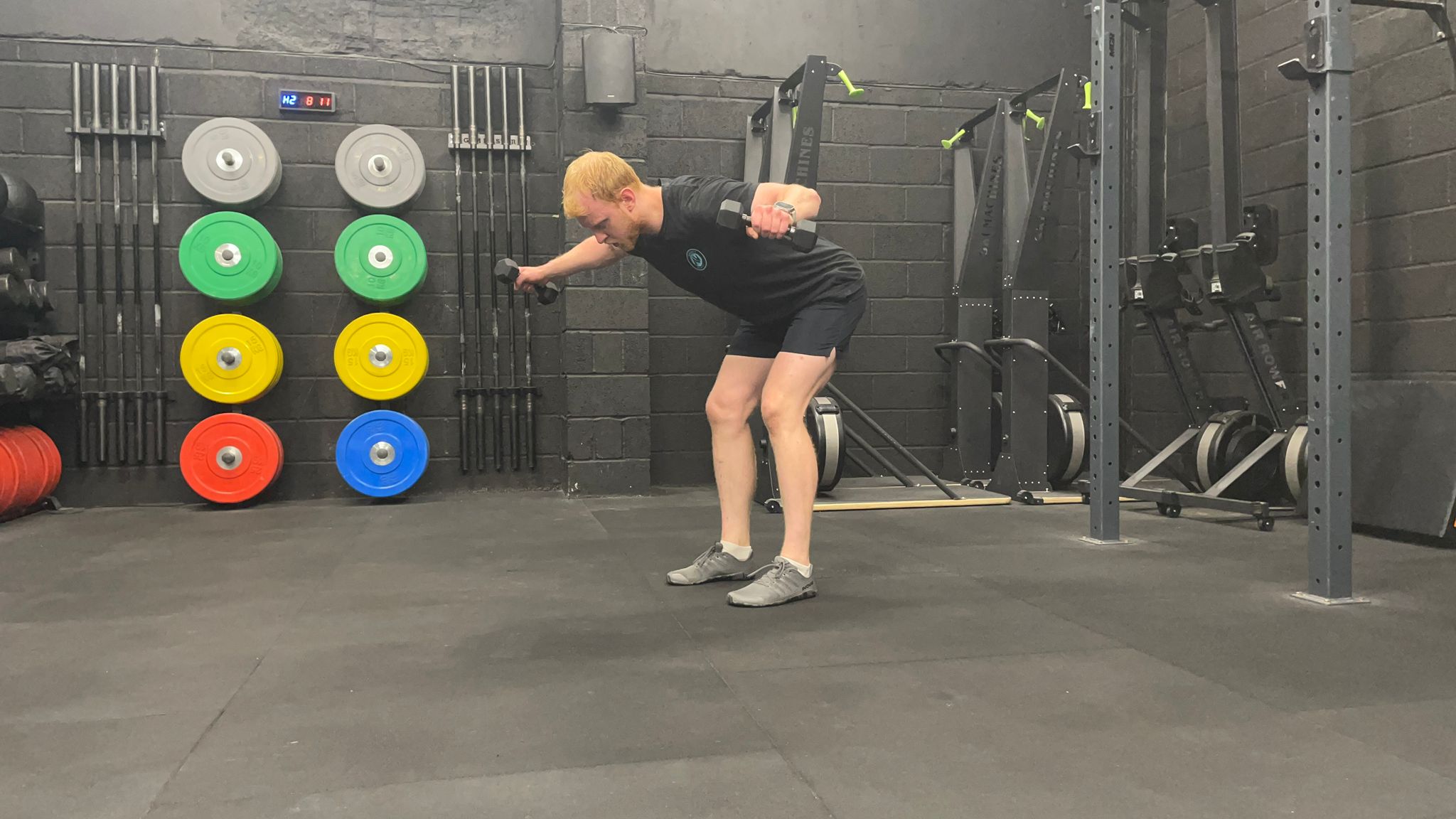
Sets: 3 Reps: 10-12 Rest: 45 seconds
- Hold a dumbbell in each hand with your arms by your side and your palms facing inwards.
- Keeping your back flat, hinge at the hips until your torso is almost parallel with the ground. Your arms should now hang straight down toward the ground.
- With a slight bend in your elbows, raise the dumbbells out to your sides until your arms are roughly level with your torso, then control the dumbbells back to the starting position.
Benefits of this workout
This workout can help you build strength, muscle and endurance, provided you’re supporting your training with an appropriate protein-rich diet and lifting weights that challenge you (the progressive overload principle underpins any good strength training plan).
Angelino has also carefully selected some movements to address common mobility issues and muscular imbalances.
"The dumbbell rear delt fly helps address a common postural issue with hunched shoulders," he explains. "Many people have rounded shoulders due to lifestyle factors like working at a desk frequently or regularly looking down while using a phone, which can lead to discomfort and mobility issues. Strengthening the muscles that the dumbbell rear delt fly targets can help rectify this."
Angelino also says this workout will build solid foundations in strength and movement mechanics for anyone wanting to progress to more advanced training plans. This is because the workout features several of the major movement patterns we use both in and out of the gym; squatting, lunging, hinging, pressing, pushing and pulling.
Can you build muscle at home?
Angelino’s answer to this question is unequivocal: "Yes, you can build muscle training at home. You can build muscle in any training environment, as long as you are able to provide your body with sufficient resistance and use that resistance appropriately."
However, he adds that many people use weights which are too light to support their goal of building muscle.
The body adheres to the SAID (specific adaptation to imposed demand) principle, which means it adapts to meet the demands we place on it. If you’re lifting a weight that doesn’t feel difficult, the body has no reason to change, whereas regularly lifting challenging weights will prompt adaptations in muscle strength and size.
Shop dumbbells
To train with weights at home, we recommend a pair of adjustable dumbbells, which have different weight settings so you can pick an appropriate weight for the exercise, as well as increase the difficulty as you get stronger. Here are tried-and-tested top three picks, or read more about the best adjustable dumbbells.
